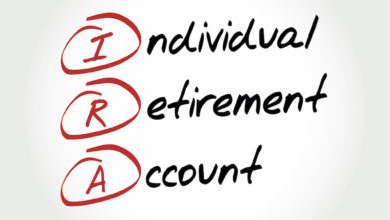Smart Retirement Planning for Moms: A Guide to Secure Your Future


“Retirement is a time to enjoy the things you never could before.” — Catherine Pulsifer
Retirement planning for moms is a juggling act of family needs and future security. Buckle up and get ready to find tailored advice to create a robust retirement strategy. Learn how to maximize your savings, navigate investment options, and understand benefits to ensure your efforts today safeguard your family’s tomorrow. Use The Institute of Financial Wellness’s retirement roadmap services to get exactly where you want to be.
Key Takeaways
- Moms face unique retirement planning challenges, such as disruptions from caregiving roles and limited access to employer-sponsored plans, underscoring the importance of developing a strategic approach to saving.
- Creating a personal financial roadmap that includes assessing financial health, setting SMART goals, and budgeting is essential for moms to balance immediate needs with retirement saving efforts.
- Utilizing tax-advantaged retirement accounts, understanding Social Security benefits, and adopting diversified investment strategies are crucial steps for moms to grow their retirement savings and secure their future.
Understanding Retirement Planning for Moms

 Juggling the roles of caregiver, primary earner, and manager of the household can often conflict with your capacity to allocate funds for retirement. Taking a break from your career to tend to childcare may lead to diminished overall earnings throughout your working years, which in turn impacts savings designated for retirement. Positions that are temporary or part-time often lack provision for employer-sponsored retirement accounts.
Juggling the roles of caregiver, primary earner, and manager of the household can often conflict with your capacity to allocate funds for retirement. Taking a break from your career to tend to childcare may lead to diminished overall earnings throughout your working years, which in turn impacts savings designated for retirement. Positions that are temporary or part-time often lack provision for employer-sponsored retirement accounts.
As someone responsible for overseeing family finances and immediate needs versus long-term saving goals, it poses quite a challenge when it comes down to making regular contributions toward retirement plans. Even amid these hurdles, there is an avenue through astute planning and sound financial decisions whereby you can augment your nest egg meant for future years. You’re empowered with access not only to unique strategies designed specifically around saving but also adaptable accounts meant specifically as you navigate various stages within familial dynamics over time.
Crafting a Personal Finance Roadmap

Commencing your path to a secure retirement requires developing a detailed financial plan. This strategy should effectively address how you manage your money, tackling both immediate expenses and future retirement goals. Financial planning is not merely an isolated exercise but rather an evolving undertaking that should kick off as soon as possible in life, adapting regularly to any changes in personal circumstances.
Your blueprint for financial success involves several critical actions.
- Setting short-term objectives alongside those envisioned for the distant future
- Outlining clear tactics for attaining these ambitions
- Making informed decisions when saving and investing funds
- Leveraging compound interest, which allows earnings on initial deposits as well as on previously earned interest
Adhering to this systematic approach can dramatically enhance your savings accumulated for retirement and may even open up possibilities of retiring ahead of the traditional timeline through diligent management over time.
Don’t forget to join The Institute of Financial Wellness’s retirement roadmap webinar!
Assessing Current Financial Health
Initiating a personal finance plan begins with an in-depth review of your existing financial situation. This process includes enumerating all of your assets, encompassing retirement savings and accounts, property holdings, and investments. It’s essential to take stock of any debts you have, including mortgage payments and other loans.
To conduct a comprehensive assessment of your financial wellness, one must also examine sources of income – whether they stem from primary employment, supplementary entrepreneurial ventures, or passive streams. It is equally important to itemize every outgoing expense you incur. With this data on hand about your assets versus liabilities alongside income against expenses helps solidify the groundwork for determining attainable goals concerning saving for retirement within the scope of managing personal finances. The Institute of Financial Wellness financial advisors can help you in this analysis and journey towards a comfortable retirement.
Setting Short- and Long-Term Goals
Creating well-defined objectives is a critical component of designing your personal finance strategy. Employing the SMART criteria to establish retirement goals ensures they are:
- Specific
- Measurable
- Attainable
- Realistic
- Time-bound [1]
This method allows you to synchronize your investment choices with your risk appetite and concentrate on what’s financially important to you.
You might have short-term ambitions like building an emergency fund or eliminating high-interest debt. Conversely, long-term aspirations could encompass saving for retirement or setting aside funds for your child’s higher education. Keep in mind that achieving financial independence begins with the formulation of transparent and feasible objectives.
The Power of a Budget
 Creating a budget is a crucial step in your financial strategy. It helps manage your finances by giving precedence to savings and investments while also accommodating discretionary expenditures, allowing you to align immediate needs with future ambitions.
Creating a budget is a crucial step in your financial strategy. It helps manage your finances by giving precedence to savings and investments while also accommodating discretionary expenditures, allowing you to align immediate needs with future ambitions.
Setting up automatic transfers from your earnings into employer-backed retirement plans and methodically boosting these contributions each year encourages continuous saving. This approach promotes the expansion of your retirement reserves and guarantees that funding for retirement accounts remains uninterrupted as you handle everyday living costs [2].
Exploring Tax-Advantaged Retirement Accounts

Armed with a strategic plan, the next phase is to delve into the monetary instruments that will pave your path toward retirement. Tax-advantaged retirement accounts are such instruments. These include 401(k)s and Individual Retirement Accounts (IRAs), both of which offer tax benefits like reduced income tax liabilities, thereby amplifying your ability to build your retirement savings.
It’s crucial when weighing up Traditional IRAs against Roth IRAs to take stock of their distinct tax advantages. For instance, contributing to traditional IRAs could lower your taxable income for the current year since those contributions may be deductible from taxes. In contrast, while Roth IRA contributions don’t afford an immediate tax deduction, they do provide a future benefit by allowing you to withdraw these funds free of taxes upon retirement. If you’re not employed because you’re managing household responsibilities full-time, spousal IRA options enable continued investment in retirement without having earned income.
Should you opt for the Roth version as part of setting up a spousal IRA—despite paying taxes on any money contributed now—you can look forward to exempting yourself from these obligations during retirement life. This strategy is designed so that ultimately more savings are retained for use later on.
Making the Most of Social Security Benefits
Understanding Social Security benefits is critical, just as optimizing tax-advantaged retirement accounts. Individuals born after 1959 reach their full retirement age at 67 to obtain Social Security benefits—that’s the milestone when one can claim the entirety of their benefit amount.
For mothers who have not met the prerequisite work history of 40 quarters needed for complete Social Security benefits, eligibility for a spousal benefit may still exist—potentially allowing them access to up to half of their partner’s entitlements. Yet it should be recognized that if you earn over $21,240 annually while drawing on spousal benefits before reaching your designated retirement age, there could be a reduction in those social security payments [3].
Investment Strategies for Growing Your Nest Egg
 Strategic investing is a crucial element of retirement planning, where the goal is to balance potential returns with risk management by spreading your income and savings across various investment assets. The practice of diversification can improve possible financial outcomes while safeguarding against downturns, making it an essential strategy for growing your retirement savings.
Strategic investing is a crucial element of retirement planning, where the goal is to balance potential returns with risk management by spreading your income and savings across various investment assets. The practice of diversification can improve possible financial outcomes while safeguarding against downturns, making it an essential strategy for growing your retirement savings.
To accomplish a diversified portfolio that aligns with your long-term aspirations for retirement, it’s important to incorporate a variety of asset types within both short-term and long-term investment strategies. This careful blend helps manage risk while aiming for rewards and positions you well as you approach the transition into retirement—even if it’s just five years down the line.
The Role of Risk Tolerance in Investing
Understanding your risk tolerance is essential in the investment world as it relates to the likelihood of underperformance or financial loss. The extent of risks you are willing to take will shape your approach to investing by ensuring a balance between potential returns and possible downturns.
Those with a greater willingness to accept risk may gravitate towards stocks due to their significant growth possibilities, albeit accompanied by increased fluctuation. Conversely, those with more conservative risk appetites might opt for steadier options such as bonds.
Evaluating both your ideal retirement lifestyle and when you plan to retire is critical for aligning how much risk you’re comfortable taking on with the necessary investment strategies that will help fulfill your retirement objectives.
Aligning Investments with Retirement Objectives
Aligning your investment choices with your retirement goals is a crucial aspect of crafting an effective investment strategy. Factors such as the age at which you wish to retire and the lifestyle you want to maintain during retirement should influence these decisions.
It’s vital to continually reassess and adjust your investment approach in light of changing goals and fluctuations in financial markets. Utilizing instruments like a retirement calculator enables you to estimate potential future savings by taking into account elements like your present economic situation, income level, contributions made, and expected returns on investments.
Partnering with Financial Advisors for Tailored Advice
Expert guidance, especially in the realm of investment advice, can be instrumental during complex life events that impact retirement planning. Initiatives such as The Institute of Financial Wellness are available to help you locate financial advisors and investment experts tailored to your specific requirements, as well as help you determine your retirement score and what you need to do to improve it.
It is essential to define explicit financial objectives before consulting a financial advisor. These goals often encompass critical areas such as retirement savings, funding for education, devising an estate plan or effective tax strategies.
Finding the Right Advisor for Your Family
Choosing the right financial advisor who is in sync with your family’s unique needs is crucial for effective retirement planning. It’s vital to verify that a financial advisor has a fiduciary duty to act in your best interest legally when managing your finances. You should also have clarity on how they are compensated, whether through fees or commissions, which can influence their investment decisions and ensure they prioritize your family’s fiscal objectives.
For women who may be single due to various life circumstances—such as being unmarried, divorced, or widowed—it becomes even more essential to partner with a financial advisor attuned to their specific challenges regarding retirement preparation. To identify reputable advisors, leveraging personal referrals from relatives and acquaintances or consulting certified listings provided by professional finance organizations can help secure an ally focused on fostering monetary security leading into retirement.
Collaborating on a Customized Plan
When you’ve identified the ideal advisor, proceed to work together on a tailored strategy that caters to your specific financial desires and objectives. Engaging with a financial advisor provides not only emotional backing but also consistent insight amid economic instability, an aspect that is crucial for successful long-term financial planning.
Preparing for Healthcare Costs in Retirement
 Planning for retirement should include a strategy to handle healthcare costs, which tend to be among the most significant expenses during this stage of life. To effectively plan for these and other anticipated retirement expenditures such as housing and recreational activities, one must project their future healthcare needs. Health Savings Accounts (HSAs) are particularly beneficial for individuals with high-deductible health plans due to their triple-tax advantage: contributions can reduce taxable income, account investment growth is tax-free, and funds used for qualifying medical expenses do not incur taxes upon withdrawal.
Planning for retirement should include a strategy to handle healthcare costs, which tend to be among the most significant expenses during this stage of life. To effectively plan for these and other anticipated retirement expenditures such as housing and recreational activities, one must project their future healthcare needs. Health Savings Accounts (HSAs) are particularly beneficial for individuals with high-deductible health plans due to their triple-tax advantage: contributions can reduce taxable income, account investment growth is tax-free, and funds used for qualifying medical expenses do not incur taxes upon withdrawal.
Upon reaching retirement age:
- HSAs may cover COBRA premiums or Medicare parts A, B, and D, but MSA premiums are high.
- They allow payment toward certain qualified long-term care insurance costs.
- After turning 65 years old, the accounts provide more flexibility by allowing money withdrawals also on non-medical purchases. However, this is not the case. These transactions will attract ordinary income tax.
Integrating projected healthcare expenses into your overall financial strategy is essential when preparing for retirement in order to secure fiscal well-being, given the substantial nature of such costs throughout later years.
Retirement Planning for Stay-at-Home Moms

Stay-at-home mothers encounter distinctive hurdles in preparing for retirement. Their dedication to the care of children and home management can lead to substantial decreases in future financial resources, negatively affecting their accumulation of assets for retirement. Nevertheless, these mothers have access to strategies that enable them to fortify their long-term economic security.
One effective strategy is establishing a spousal IRA, which allows a non-working spouse the opportunity to build up retirement savings under their own name as long as there’s earned income from the working partner. It is advisable that households allocate 15% of their joint income towards planning for retirement. This sum could be split equitably between accounts belonging both to the earning spouse and stay-at-home parent. Distributing savings contributions evenly not only affords tax advantages but also empowers the stay-at-home parent by integrating them into managing family finances.
Balancing Retirement and College Savings
Navigating the delicate equilibrium between saving for retirement and setting aside funds for other financial goals, such as college education savings, is challenging. Prioritizing retirement savings is essential because you can’t borrow money to fund your retirement in the way that student loans, grants, and scholarships allow you to finance a college education.
To facilitate saving for educational expenses while still focusing on retirement savings, consider taking advantage of tax-efficient strategies like 529 plans. Investments made in these plans benefit from compound growth without being subject to taxes, and when used for qualified educational costs, they can be withdrawn tax-free as well. It’s important to engage in open discussions with your children about college affordability—addressing budget considerations openly and exploring how various funding options, including student loans, grants, and scholarships, might play a role in meeting their higher education expenses.
Adjusting Your Plan as Life Changes
The unpredictable nature of life necessitates the ability for your retirement planning to be sufficiently flexible to accommodate changes. For instance, assuming caregiving responsibilities for aging relatives can interrupt income and career progression, thereby impacting anticipated retirement income.
Should an individual have been married for a minimum of ten years and then divorced, they may qualify for spousal benefits under Social Security, which could alter their original retirement plans. Similarly, widows are eligible to claim their late spouse’s Social Security benefits – a factor that must be considered when recalibrating their strategy toward retirement. It is essential to routinely re-evaluate and modify one’s retirement objectives post major life events. This process should also incorporate family involvement in devising the plan.
In the event of disruptions to regular income flow, formulating a revised budget along with bolstering contributions towards one’s retirement can help restore stability within one’s long-term financial arrangements for after work-life cessation.
Mom’s checklist to assess their financial well-being

 Maintaining your financial health requires effective management of bills and debts, emergency savings, and planning for future expenses such as college and retirement. Having a household budget based on the 50/30/20 rule can aid in planning your monthly finances, allocating 50% for necessities, 30% for wants, and 20% for savings and debt repayment.
Maintaining your financial health requires effective management of bills and debts, emergency savings, and planning for future expenses such as college and retirement. Having a household budget based on the 50/30/20 rule can aid in planning your monthly finances, allocating 50% for necessities, 30% for wants, and 20% for savings and debt repayment.
Monitoring and maintaining a good credit score is crucial for financial health as it affects your ability to qualify for loans and new credit accounts. A healthy debt-to-income ratio reflects financial well-being and is an important factor when seeking to borrow money or save for the future.
Experts suggest the following key components of financial wellness:
- Keeping an emergency fund with 3-6 months of living expenses to handle unforeseen financial needs
- Evaluating your insurance needs, such as life or long-term care insurance
- Utilizing appropriate financial tools, such as checking and savings accounts, IRAs, CDs, and investment accounts, for managing living expenses and planning for long-term financial goals.
IFW: Your Trusted Source for Comprehensive Financial Education and Planning
The Institute of Financial Wellness (IFW) provides a comprehensive suite of financial education materials, resources, and services. It delivers engaging and unbiased content designed to inform individuals about finances, helping them make well-informed decisions with confidence for their unique life circumstances.
By leveraging the offerings at IFW, people can work towards fulfilling their individual financial objectives.
A multitude of services are available through IFW, including:
- The IFW Retirement Roadmap guides individuals toward achieving their most ambitious retirement aspirations.
- Approaches aimed at minimizing personal college expenses.
- Methods intended to maximize the benefits from your 401(k).
- Instruction on securing your income, safeguarding loved ones’ future security, and ensuring that one’s legacy remains intact as intended.
With over 35 highly respected certifications and accreditations held by its network of Financial Professionals along with resource partners and industry thought leaders present within its ranks. You are assured some of the finest advice alongside support in navigating the financial landscape.
Full Summary
Retirement planning for moms involves understanding the unique challenges that they face, crafting a personal finance roadmap, exploring tax-advantaged retirement accounts, maximizing Social Security benefits, developing investment strategies, seeking advice from financial advisors, preparing for healthcare costs, and adjusting plans as life changes. Remember, retirement planning is not a one-time task but a lifelong journey that requires consistent review and adjustment. But with the right knowledge, tools, and strategies, you can navigate this journey with confidence and secure your financial future.
Frequently Asked Questions
What are some of the challenges that moms face in retirement planning?
Due to career interruptions for child-rearing, the restricted availability of employer-sponsored retirement plans, and the balancing act of allocating household income towards saving for the future, mothers encounter obstacles in preparing for retirement.
Such hurdles necessitate meticulous financial strategizing and contemplation.
What is the role of a financial advisor in retirement planning?
A financial advisor is essential in the realm of retirement planning, as they offer expert guidance and devise a personalized financial strategy that aligns with your specific requirements and aspirations.
Their expertise is vital when it comes to overcoming obstacles associated with planning for retirement, making their counsel indispensable.
How can I prepare for healthcare costs in retirement?
To plan for future healthcare expenses as part of your retirement savings, it’s important to project the potential costs and think about utilizing Health Savings Accounts (HSAs) due to their tax benefits. By doing this, you can ensure that healthcare costs are accounted for along with other financial needs in retirement.
How can stay-at-home moms save for retirement?
Allocating a portion of household income to retirement savings through the use of spousal IRAs is an astute strategy for stay-at-home moms to save for their future and ensure financial security in retirement.
How do I balance retirement and college savings?
It’s essential to place a higher importance on savings for retirement because unlike education expenses, you can’t finance your retirement through loans.
For saving up for college costs, consider exploring options that offer tax benefits like 529 plans.
After 18 years as President and Founder of TheaterMania and OvationTix, Darren is excited to be on a new journey as the President and Co-Founder of The Institute of Financial Wellness. (The IFW)
For consumers, The IFW provides financial education, resources, and services that help people live their best life.
For Financial Professionals, The IFW provides proven sales and marketing systems, state-of-the-art technology, training, and support to financial professionals nationwide. The IFW helps financial professionals grow their practices to the next level! IFW Certified Financial Professionals are an elite group of professionals that, together with the IFW, help people succeed financially and live their best lives.






